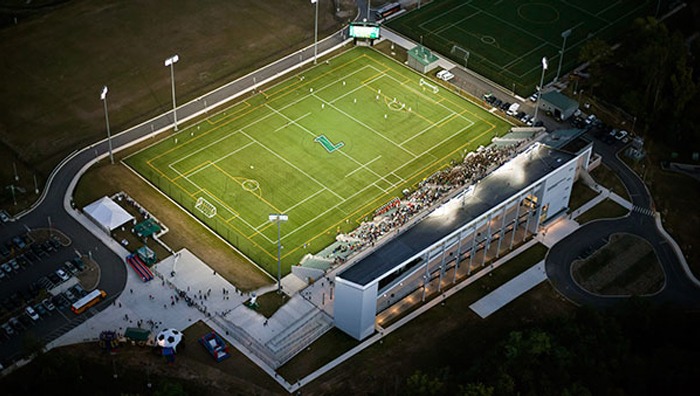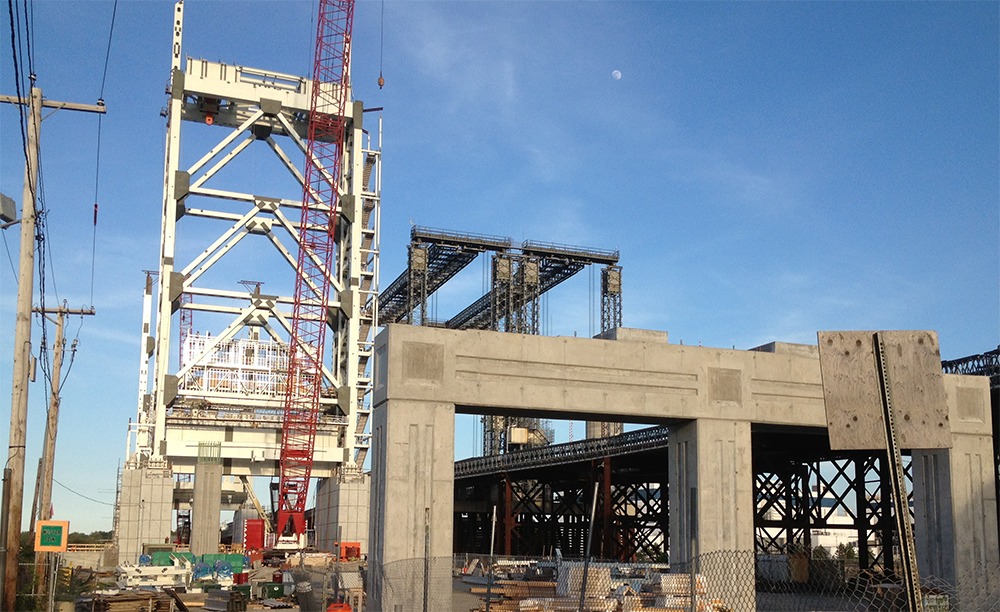
Renewable Energy
Haley & Aldrich geotechnical team supports first U.S. pier tailored to offshore wind industry
Eight times
the typical shipping pier loading requirements
First of its kind
port on the East Coast of the United States
1 million homes
estimated to be powered by related wind projects
Summary
- The port of New London, Connecticut, is ideally located to support offshore wind installations. But its two existing piers — both of which were built more than 100 years ago — needed significant upgrading to support the heavy weight of offshore wind turbine components.
- The new single pier would have to bear more than eight times as much weight as a typical shipping pier. Poor subsurface conditions and historical structures complicated the design and construction.
- To meet the project’s challenges, we drew on our extensive port experience to efficiently conduct land and underwater subsurface investigations. We also provided geotechnical engineering recommendations to guide the construction of the new pier and improvements to the site, and we monitored construction, including the installation of piles, the placement of infill placement, and the vibrocompaction of underwater soils.
- Our work made it possible for New London to position itself as a hub for offshore wind development and provided the infrastructure to deliver on the first three wind projects planned for the region.
Client challenge
The port of New London, Connecticut, is ideally located to support offshore wind installations. It has deep-water access for large ships and no bridges to block the transport of huge wind turbine components out to sea for installation. The towers alone can scale up to about 260 meters tall, or two-thirds the height of the Empire State Building.
Danish wind developer Ørsted, which has plans for multiple East Coast offshore wind farms, partnered with the state of Connecticut and the Connecticut Port Authority to refurbish the port’s two piers for offshore wind developers.
The components of offshore turbines are extremely heavy — a single blade can weigh 40 tons. New London’s two existing piers were built more than 100 years ago and were not up to the task of bearing such heavy loads. With remnants of historical structures buried around the site and the less-than-ideal subsurface conditions characteristic of many marine projects, the project would be complex.
So the project’s marine structural engineering firm, Moffatt-Nichol, asked Haley & Aldrich to consult on the geotechnical aspects. Given our decades of experience at all four U.S. Navy shipyards and many other major ports in the United States, and extensive experience with nearby sites, the firm knew we could make well-informed decisions quickly — key when conducting subsurface investigations underwater at the cost of tens of thousands of dollars a day. They also knew we had the responsiveness and relationship skills to manage working on the water with multiple subcontractors.

New London State Pier in 2021
Our approach
The project called for combining the two existing piers into one structure, which would become the new State Pier. The existing State Pier dated to 1912, and its neighboring Central Vermont Railroad Pier was even older; built in 1876, it was believed to be the only 19th-century pier still standing in Connecticut.
Although the project team had documentation of recent refurbishments, we knew to expect some surprise historical structures at the site, given the age of the piers. We also needed to understand the local geology and subsurface conditions to provide sound geotechnical engineering recommendations that could answer the project’s central challenge: how to build a foundation strong enough for the new pier to support loads of up to 5,000 pounds per square foot, more than eight times what conventional container port loading facilities can support.
Working on land and in water ranging from 35 feet to 43 feet deep, we planned and monitored geotechnical subsurface exploration programs consisting of 65 test borings, which ranged up to 67 feet deep on land and up to 98 feet below the mudline on water. Given our experience with similar projects, we knew which skilled drillers to partner with for these investigations, and we could make efficient decisions about how work should proceed — essential when a day’s work of drilling could cost approximately $30,000. We also had the judgment to know how extensively to investigate existing historical construction alongside our subsurface explorations.
Our investigations revealed how to solve one of the site’s biggest challenges: infilling between the two existing piers to support the construction of one much stronger new loading pier. In addition, understanding subsurface conditions was crucial for the design of the two pile-relieving platforms, king pile bulkheads, and tieback anchor piles.
When construction on the new State Pier is completed, New London will become the first port in the United States capable of supporting offshore wind installation.
Value delivered
- Improved fill placed underwater using vibrocompaction to support loads of up to 5,000 pounds per square foot
- Provided the infrastructure to deliver on the first three wind projects planned for the region, which will provide enough megawatts to power an estimated 1 million homes
- Determined how to execute on one single large pier with infill that added a significant amount of working and storage space for wind turbine components
- Enabled New London to position itself as a hub for offshore wind development and benefit from an estimated hundreds of new jobs and millions of dollars added to the local economy
“The future of State Pier is vital to the Connecticut Port Authority’s and the state’s success. This tremendous step forward will maximize the location and assets of State Pier, boosting the region’s economy in the process.”
David Kooris, chair of the Connecticut Port Authority, on the project’s website
For more information, contact:

Program Manager, Geotechnical Engineering

Project Manager












